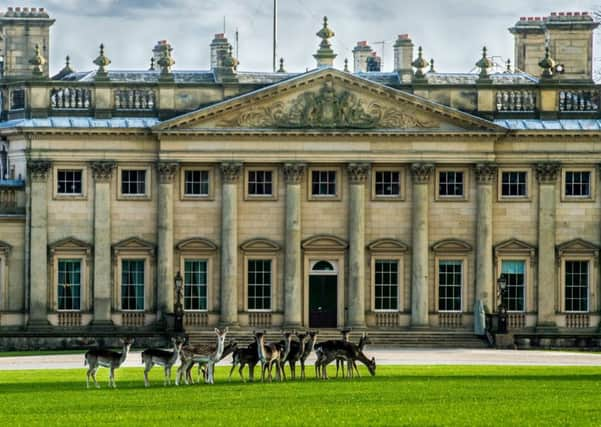Young deer bucking the trend at Leeds Harewood House


For these shy, timorous animals spend most of their lives foraging near the safety of the woods on the estate and only tend to venture close to the main house when it’s quiet and there are no people around.
Harewood House estate, seven miles or so north of Leeds, has been home to a deer park since medieval times and has three types of deer spread over some 4,000 acres of land.
Advertisement
Hide AdAdvertisement
Hide AdThere are roughly 155 red, 45 fallow and 45 roe deer at present with the number fluctuating when the calves are born in early summer.
The red deer, once rare in some parts of Europe, is now one of the most numerous deer species. Successful reintroduction and conservation efforts, particularly in this country, have led to a noticeable increase in their numbers.
It’s interesting to note that red deer vary in colour depending on the season and habitat in which they live - they tend to have a grey or lighter colour in winter and then adopt a more reddish and darker coat during the summer months.
You can also find fallow deer at Harewood. Native to Europe and the Middle East, they can be identified by their chestnut coat and distinctive white mottles in summer which then becomes darker and unspotted in the winter.
Advertisement
Hide AdAdvertisement
Hide AdFallow deer were introduced in Britain by the Romans and are now widespread here. Roe deer, on the other hand, are native to Britain.
Smaller, with reddish and grey-brown colouring, they are well suited to our colder climate. Quick and graceful, a roe deer was the inspiration for the world’s most famous deer - Bambi (though he was changed to a white-tailed deer for the Disney movie).
And as this masterful photograph beautifully illustrates, they’re also a most welcome sign that spring has finally arrived.
Technical details: Nikon D4, Lens Nikon 70-200mm, Shutter Speed 1/800s, Aperture f/8, ISO 1000.
Words by Chris Bond
Picture by James Hardisty